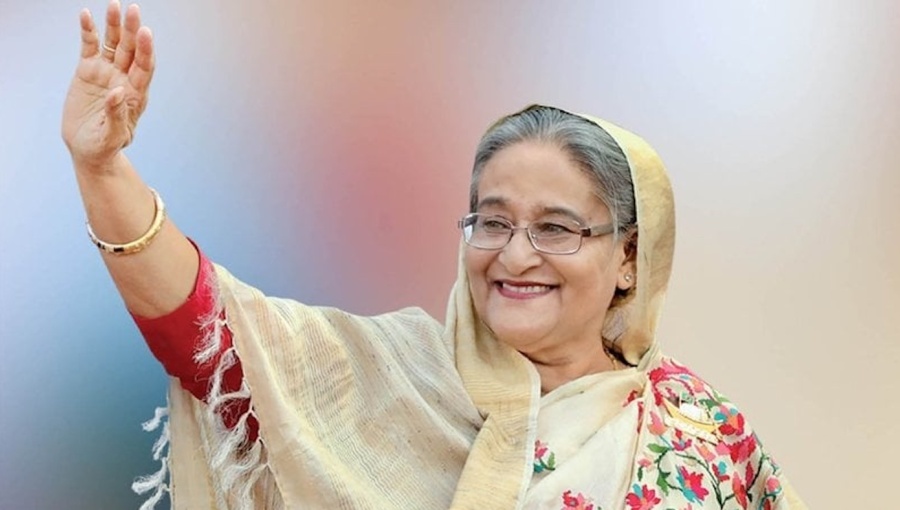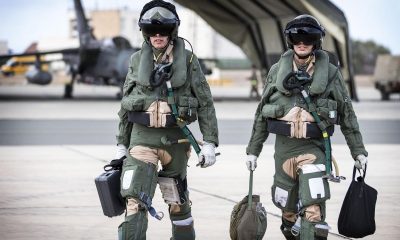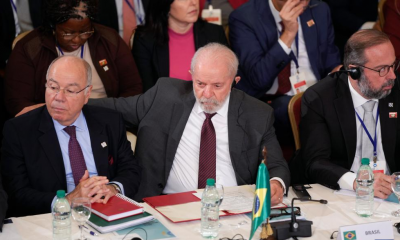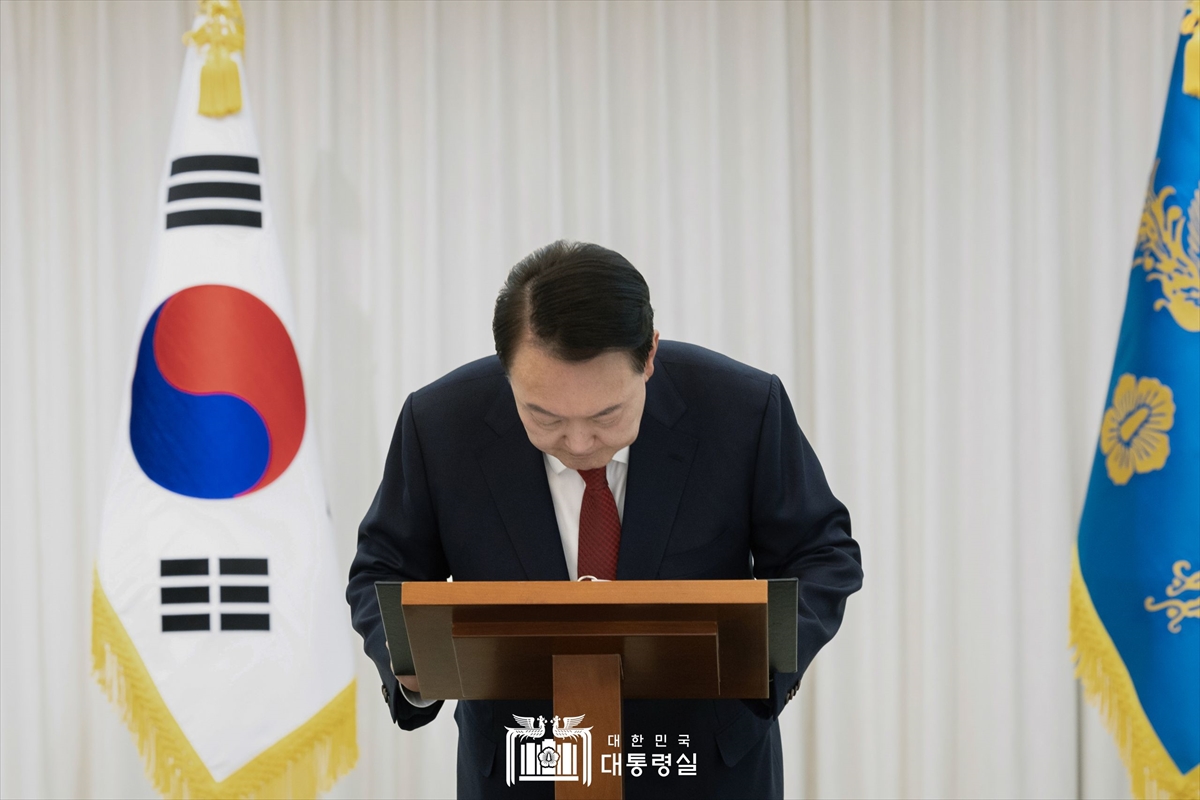Sheikh Hasina, the 76-year-old former prime minister of Bangladesh, who resigned from her position following deadly protests, and fled the country, holds the record for the longest tenure as prime minister in the history of Bangladesh and the world, with 15 years of continuous rule and a separate five-year term. She has also experienced prison, forced immigration and assassination of his relatives. Her premiership ended in self-imposed exile following a series of violent protests in 2024.
Hasina, who is of Iraqi Arab origin from her father’s and mother’s family, has mentioned in many of her interviews and speeches the difficult living conditions while her father was a political prisoner.
His father is Sheikh Mujibur Rahman, the founder and leader of Bangladesh’s independence from Pakistan in 1971 and the first president of Bangladesh, and his mother is Begum Fathizul-ul-Nasa Mujib.
In Bangladesh, Sheikh Mujib is referred to as the “Father of the Nation”. Mujib and some members of his family were assassinated in a military coup in 1975.
After her father’s murder, Hasina and her sister lived in exile in India for many years. She later returned to Bangladesh and became the leader of the Awami League party.
Hasina participated in the 1991 elections as the leader of the Awami League (AL) after the end of the autocratic regime of Hussain Mohammad Irshad, and lost the result to Khalid Zia, who had collaborated with her against the Irshad regime.
As the leader of the opposition, Hasina accused Zia’s Bangladesh Nationalist Party (BNP) of electoral fraud and boycotted the parliament.
This action of Hasina was accompanied by violent demonstrations and political unrest, and eventually Zia resigned from the interim government, and Hasina became the prime minister after the June 1996 elections.
Although Bangladesh faced a lot of political unrest during her first term as prime minister, which ended in July 2001, it was the first full five-year term for a prime minister of Bangladesh since the country’s independence in 1971.
In 2007, after the rising of tensions, she left Bangladesh to the US and the UK. The government at that time accused her of murder and corruption and tried to dissuade her from returning with many obstacles. Hasina was arrested some time after her return, but ultimately the charges against her did not go anywhere. In 2014, she was re-elected for a third consecutive term in elections boycotted by the opposition and criticized by international observers.
Hasina helped over one million Muslim who fled genocide in Myanmar, but she accused of extrajudicial killings under her government in Bangladesh
In 2017, Hasina was praised for sheltering and helping nearly one million Rohingya fleeing genocide in Myanmar. The Rohingya are a Muslim people who live in Rakhine state in western Myanmar and make up four percent of the total population of Myanmar.
The United Nations and most international media and human rights organizations describe the Rohingya people as one of the most oppressed minorities in the world.
Hasina’s victory in the 2018 and 2024 elections was again accompanied by violence, fraud and protests, and it seems that during her term as prime minister, Bangladesh experienced a democratic backsliding. Human Rights Watch has documented extensive cases of enforced disappearances and extrajudicial killings under her government.
Many politicians and journalists were systematically and judicially punished for challenging her views and her government.
In 2021, Reporters Without Borders issued a negative assessment of Hasina’s media policy for restricting press freedom in Bangladesh.
In Bangladesh, Hasina has always been criticized for being too close to India. She has been referred to as an embodiment of India’s involvement in Bangladesh politics, and critics have described India’s support for her as the main reason for Hasina’s power in the past years.
In 2018, Hasina was included in the list of 100 most influential people in the world by Time Magazine, and in 2015, 2018 and 2022, her name was published in the list of 100 powerful women in the world by Forbes Magazine.
Hasina was forced to escape from Bangladesh
The Reuters news agency had recently reported, quoting Indian government sources, that Hasina the resigned Prime Minister of Bangladesh, who fled her country, will remain in India.
Meanwhile, the Indian media reported that Hasina landed at Hinden Air Force Base in New Delhi after resigning as Prime Minister and is likely to fly to London.
According to international media reports, after escaping from Dhaka, the capital of Bangladesh, she went to the city of Agartala in northeastern India. Her escape from the country was widely reflected in the world media. Sheikh Hasina’s departure from Bangladesh took place in a situation where many citizens were killed in the recent protests of this country.
According to government opponents and human rights defenders, Hasina is accused of unjustly imprisoning her main rival and restricting the freedom of the press. She has sought to eliminate all opposition, particularly by killing opposition activists.
The root of the deadliest protests in Bangladesh
The fire of this round of protests was ignited by allocating 56pc quota for government jobs to the families who participated in the independence war of Bangladesh.
Although the Supreme Court of Bangladesh canceled most of the quotas for government jobs, the protests, which resulted in hundreds of deaths, injuries, and imprisonment, continued, centered on students and youth.
Sheikh Hasina’s public apology and the reopening of universities that were closed when the violence started were among the demands of the protesters.
The recent protests in this Muslim-majority country of 170 million people took place due to widespread unemployment among university graduates.


 EUROPE5 days ago
EUROPE5 days ago
 OPINION1 week ago
OPINION1 week ago
 DIPLOMACY2 weeks ago
DIPLOMACY2 weeks ago
 DIPLOMACY1 week ago
DIPLOMACY1 week ago
 ASIA2 weeks ago
ASIA2 weeks ago
 OPINION1 week ago
OPINION1 week ago
 EAST MEDITERRANEAN2 weeks ago
EAST MEDITERRANEAN2 weeks ago
 OPINION4 days ago
OPINION4 days ago




















